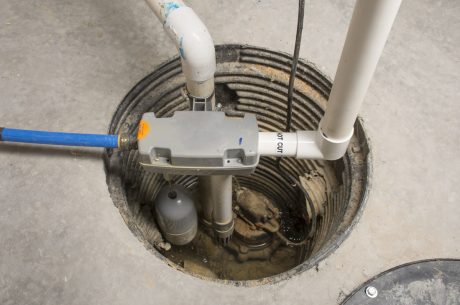Your HVAC system is a prime target for mold spores, especially in the humid and varied climate around the Dayton, Ohio, and Cincinnati areas. If you’ve ever noticed a musty odor when your HVAC kicks on or experienced an increase in allergy symptoms, you might already be dealing with mold spores in your system.
Your heating and air system can easily provide an ideal environment for mold by providing moisture, organic material and optimal temperature conditions.
But don’t worry! Understanding why mold grows and taking a few proactive steps can keep your HVAC system mold-free and ensure a healthy, comfortable home for you and your family.
From Air Ducts to Thermostats: Where Does HVAC Mold Grow?
HVAC stands for heating, ventilation, and air conditioning. This major building system keeps your home or office warm or cool and the air circulating.
Key components include your furnace or heat pump, air conditioning unit, and ductwork. Essential to the operation are the heat exchanger, evaporator coil (part of the a/c unit), condensing unit (where the condenser coil lives), and the electronics that control the system, including the thermostat—the “brain” that lets you control the operation.
Mold likes moisture and dust, so it can grow year-round. Depending on the season, look for mold growth in your HVAC system’s air vents, drain pan, and air conditioner. Drain lines and the evaporator coil are also places where mold can thrive. This moisture can also cause water damage to your home.
Is it Common to Have Mold in the HVAC?
Yes, mold is common in heating and cooling systems. Moisture, organic debris, and optimal temperature combine to create a perfect mold habitat.
Moisture mainly comes from condensation on cooling coils and high humidity. It also comes from water in poorly sealed or insulated ducts. Water leaks and poor drainage also provide the dampness that mold enjoys.
Dust, debris, and other organic materials (especially from inadequately cleaned and maintained units) contribute to system mold. These materials feed the mold and cause it to flourish.
Temperature also affects mold growth. HVAC systems often operate within a range that can support mold. Mold thrives in warm conditions, and the temperatures generated by HVAC systems during regular operation can create an environment conducive to mold growth.
Signs that Mold Spores Might Be Growing in Your System
- Sometimes, you only need to look around to find mold. Visible mold growth (likely appearing as discolored patches) can be found on vents, ducts, or around the HVAC unit.
- Musty smells are another tell-tale sign of mold. When the unit runs, there may be an earthy or musty smell or a persistent odor in several rooms throughout the building.
- Another sign of mold may be increased allergies or respiratory issues. These could include increased allergies (itchy eyes, skin rashes), asthma symptoms or issues like coughing, sneezing, or wheezing.
- Excess moisture, such as unexplained condensation on or around HVAC components or signs of water damage or leaks, could indicate mold.
- Also, check for unusual HVAC performance, like reduced efficiency or airflow from the system. Frequent cycling on and off could indicate potential blockages from dust debris where mold can grow.
- Dust and Debris can also accumulate around vents and air returns. Dust containing black or dark spots may indicate mold.
If you are unsure if it’s mold, call a certified mold inspector. The inspector will take mold samples and send them to a lab for identification.
Is Mold in HVAC System Dangerous?
Yes, some molds can be dangerous. They can cause a range of health issues and impact indoor air quality. Plus, a mold problem can damage your HVAC system.
According to the EPA, “molds produce allergens, irritants, and in some cases, potentially toxic substances (mycotoxins).” Touching or inhaling growing mold may cause respiratory issues and allergic responses and reactions, especially in sensitive people. As the air quality degrades, spores can spread and cause ongoing health issues in some people.
Along with the health implications, a mold-contaminated HVAC system can damage your heater and air conditioner. The units become less efficient, setting them up for potential failure.
Tips to Prevent HVAC Systems Mold Growth
- Clean and Maintain Regularly
- Replace Filters
- Wet, dirty filters don’t trap mold and other contaminants. If you don’t change the filters (usually once a month), these particles will clog your ventilation system.
- Control Moisture
- Optimize Humidity. Keep indoor humidity between 30-60%. Controlling humidity prevents excess moisture, which can promote mold growth.
- Use dehumidifiers if necessary, especially in humid climates.
- Inspect HVAC systems for leaks, condensation, or water damage. Quickly fix leaks or faulty seals in ductwork, pipes, or HVAC units. This will prevent water intrusion and moisture buildup.
- Ensure Proper Ventilation
- Make sure there is proper ventilation in all HVAC-serviced areas. Poor ventilation leads to stagnant air and moisture.
- Also, schedule regular inspections and maintenance by qualified HVAC techs. This will catch and fix issues before they escalate. Professionals can also identify areas of concern and provide recommendations for preventing mold growth.
How Do I Remove Mold from My HVAC System?
To start the process, look for signs of mold. Check for growth on vents and ducts. Also, check for a musty odor, especially when the unit is running.
Next, turn off the HVAC system and start cleaning. It is important to use proper containment methods and wear personal protective equipment (PPE), like gloves, masks and eye protection. Clean the air ducts and vents using a HEPA vacuum and specialized cleaning tools. Consider professional help for thorough cleaning and to ensure safety. Also, clean coils and drip pans with water and mild detergent. Make sure they are completely dry.
After cleaning, apply a disinfectant containing an EPA-approved antimicrobial to all non-porous surfaces. Note that porous materials contaminated with mold, like air filters, may need to be replaced to ensure complete remediation. Finally, consider applying a mold inhibitor designed for HVAC systems. However, controlling moisture and maintaining your HVAC system is crucial for long-term mold prevention.
While someone familiar with the HVAC units could clean and maintain the system. However, it’s often best to call in HVAC and duct-cleaning professionals to ensure the entire system is remediated.
Need Professional Help with Mold Removal?
Don’t risk your indoor air quality and your family’s health by ignoring mold. PuroClean Emergency Services provides mold remediation in your home, office or commercial facility.
In Dayton, Ohio, call 937-401-9700, or in Cincinnati, call 513-897-8990. Our expert team is ready to provide thorough mold remediation services and ensure your home is safe and clean. Take the first step towards a healthier home or office today.
Sources:
EPA: A Brief Guide to Mold and Moisture in Your Home (PDF)
EPA: Mold Cleanup in Your Home




 PuroClean Emergency Services
PuroClean Emergency Services